When and how to sow eggplant seedlings and how to properly care for it
Eggplant is believed to be a capricious and demanding vegetable that is difficult to grow. However, adherence to correct agricultural practices greatly simplifies the process and increases crop yields.
This article will show you how to grow healthy eggplant seedlings effortlessly and what to do if difficulties arise.
The content of the article
Sowing dates for eggplant seedlings
Sowing dates are counted from the estimated time of planting in the garden. On average, seeds germinate after 10 days. The time for transplanting seedlings to the garden bed is 50-60 days from the moment of germination. Accordingly, in order to plant the plants in the greenhouse in early May, the seeds are sown in early March.
In the open ground, eggplants in central Russia are planted in mid-June, when the night frosts have already passed, so they are engaged in seeds at the end of March.
Lunar landing
Planting eggplants in 2020 is recommended for the waxing moon:
| Month | Auspicious days | Neutral days |
| February | 1 to 8, 24 to 29 | 9 and 23 |
| March | 1 to 8, 25 to 31 | 9 and 24 |
| April | 2 to 7, 24 to 30 | 1, 8 and 23 |
If planted according to the lunar calendar, seedlings resistant to diseases, pests and temperature jumps are formed, which at the end of the season will give a tasty and bountiful harvest.
Preparatory stage
It is recommended to choose seeds that are grown in your area: they are adapted to the local climate. If possible, seeds are harvested from last year's harvest.
Seed preparation
Before planting, the seeds are sorted out and deformed, darkened ones are removed. Separate large from small: it is better to plant them separately so that the plants develop in the same way and do not interfere with each other's growth.
Then a slightly salted aqueous solution is prepared and the planting material is lowered into it. Stir with a spoon, wait a few minutes. The floating seeds are thrown away, those that lie at the bottom are used for planting.
After that, the seeds are germinated: they are laid out on a plate in a thin layer in wet gauze. Cover with a plastic bag on top to create a greenhouse effect. Place the container in a warm place - the germination temperature for eggplants is + 23 ... + 25 ° С.
Important. Until the first shoots appear, it is recommended to keep the seedlings under a film.
Disinfection of inoculum is carried out with the drug "Fitosporin": it will neutralize pathogens.
Preparation of containers, places, soil
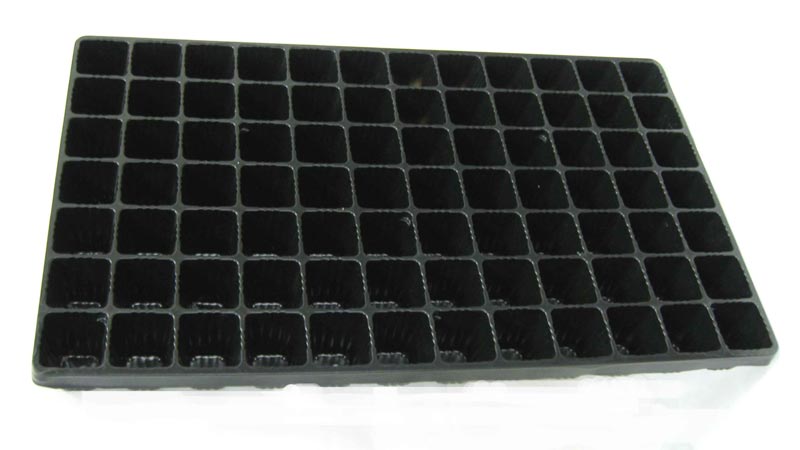
There are several types of containers suitable for seedlings: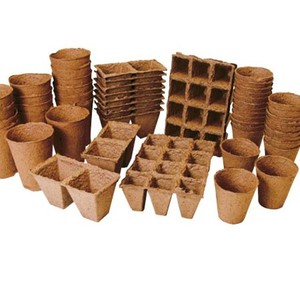
- Plastic cups... For planting, take a container with a volume of 200 ml, and 500 ml for a pick. You will need a drip tray. When transplanting, the root is practically not damaged, which reduces the period of plant adaptation to new conditions. The only drawback is the lack of drainage holes, but they are easy to make yourself.
- Plastic cassettes. Cassettes are interconnected cells with drainage holes. On sale there are kits with pallets and even lids. The main advantage of cassettes is that the seedlings can be easily removed from the cells during transplanting without damaging the root. The disadvantage is that the cells break and bend easily. Do not sow different varieties in one cassette, as the germination time may differ.
- Peat pots... Most often, this type of containers is used at the dive stage. Plus the container - the outer shell of the pot dissolves in the soil and nourishes the plants. The disadvantage is that you will have to water more often, and for this it is advisable to buy a pallet.

As soon as the sprouts break through, the seedlings are transferred to where the temperature is kept at 14-16 ° C. This is necessary so that the root system of the seedlings is strengthened. Springs are watered in the morning with warm water.
For planting, choose a light, with a neutral composition, breathable, nutrient-rich soil. They buy it in shops for the garden and vegetable garden or make it themselves by mixing turf, peat, ash, humus. A ready-made substrate for growing eggplants is also suitable.
Important. It is advisable not to use the soil in which other crops grew last season.
To make the soil safe for seeds, it is calcined in an oven and treated with steam or a solution of potassium permanganate.
How to properly plant eggplant seeds
Containers for seedlings are covered with soil by 2/3 and watered with warm, settled water. Then small holes are made in the ground, in which 1-2 pieces are laid out. seeds.
The hole is sprinkled with earth and tamped a little. Water the soil again, cover with plastic wrap.
The container with seedlings is placed in a warm, dry place, where there are no bright sunlight and drafts. On average, shoots appear in two weeks.
Periodically, the polyethylene is removed and the plants are aired: they start from half an hour a day, gradually adding time. Seven days later, after the appearance of a young seedling, the film is removed.
Unusual ways of sowing seeds
There are many unusual ways to grow seedlings. Let's tell you more about the most interesting ones.
Into a snail
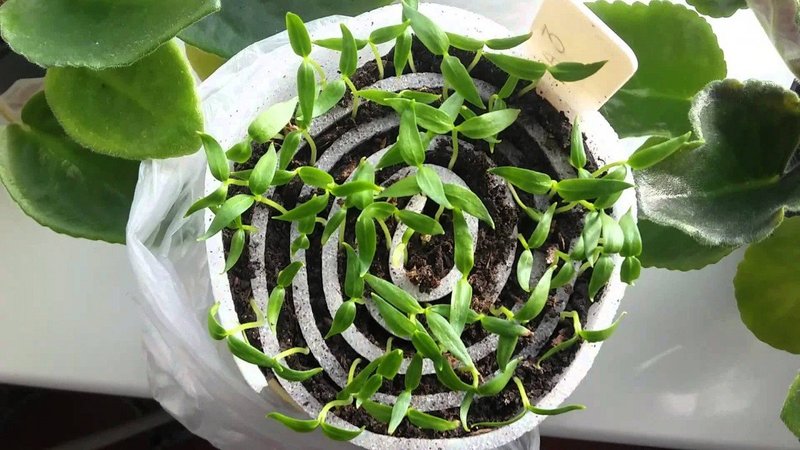
Snails are rolls of synthetic material on top of which soil is poured. They are carefully rolled up and placed in any suitable container. Seeds are planted on top and sprinkled with earth, watered with warm water.
For the snail, use greenhouse film cut into wide strips, plastic bags, a substrate for laminate or linoleum. These materials are safe, keep warm inside and create the microclimate that plants need.
Planting eggplants for seedlings in this way has its advantages:
- cheap and affordable;
- it is possible to germinate any amount of planting material;
- heat and moisture are retained;
- plants are not affected by black leg and root rot.
The method also has a drawback: since little light falls on the seedlings, it can stretch out. After the leaves appear, the seedlings will have to dive. You cannot do without land even with this sowing method.
Into boiling water
The container is filled with soil, seeds are laid out on top, they are not buried in the soil. Pour boiling water over until the topsoil is moistened and cover the container with a lid. They are placed in a warm place, periodically watered with warm water. Shoots appear in 3-4 days.
In peat tablets
Before sowing, the tablets are soaked in water for 5-7 minutes, this will increase their volume and saturate them with moisture.
When transplanting into the ground, there is no need to separate the seedlings from the tablet. A pot of seedlings is placed in the hole. The shell dissolves in the ground and additionally nourishes the seedlings with useful substances, without interfering with the development of the roots.
Disadvantage: The moisture in the tablets evaporates quickly, so frequent watering is necessary.
Pick after germination
3-4 weeks after the sprouts appear, they are dived: each is planted in a separate container. It is advisable to take containers with a volume of 500 ml or more for the comfortable development of the root system.
The soil is taken the same as for sowing seeds. 2 hours before the dive, the seedlings are watered with warm water to quickly separate the earth from the container.
Pick procedure:
- Fill the container with soil.
- Make holes.
- Remove the sprout along with the soil and transplant into a new container.
- Sprinkle with earth and tamp.
- Drizzle with warm water.
Landing method that does not require a pick
To avoid picking, plant the eggplant seeds immediately in separate containers. This method is practical, and the plants themselves feel better in a separate container, since the root system of the plant is not injured by the transplant.
Further care of seedlings
Further stages of care for eggplant seedlings: maintain light and temperature conditions, water and apply on time feeding.
Temperature and lighting
After the seedlings have sprout, the temperature is maintained at + 15… + 17 ° C for 7 to 12 days to strengthen the root system... Then the temperature is raised to + 24 ... + 26 ° C.
At night, they maintain + 17 ... + 19 ° C, gradually decreasing to + 13 ... + 14 ° C. So they simulate natural conditions for plants.
Watering
Excessive watering provokes the appearance diseases... Therefore, it is recommended to water abundantly, but rarely - no more than 1 time a week, with warm water.
Top dressing
The first top dressing is suitable for growing with and without a pick. It is carried out 10-12 days after the emergence of sprouts, a solution of yellow "Kristalon" or potassium nitrate is used.
The second feeding is carried out after 7-10 days to stimulate the vegetation with a mixture of 60-80 g of "Superphosphate" and 25-30 g of potassium salt, preparations "Kristalon special", "Kemira Lux".
Important. Before feeding, plants are watered abundantly so as not to burn the plant roots.
Potential problems, diseases, pests and control
In case of violation of the conditions of care, diseases affect the plant and prevent them from growing and developing normally.
Let's consider each problem separately.
Diseases:
- Late blight. Fungal disease that manifests itself in the first half of the season, affecting the leaves, stems and fruit. The upper part of the plants is covered with rusty spots, and a whitish bloom appears on the lower part of the leaf. A disease appears due to a violation of crop rotation, in the absence of immunity or excess moisture. They are treated with a solution of copper sulfate, the bushes are treated in the evening, in calm, dry weather.
- Verticillary wilting. It develops with a sharp change in temperature, affects the whole plant: it becomes overgrown with a whitish bloom - fungal spores. The main danger is that the pathogen remains in the soil and plant debris and can provoke re-infection. Treatment is carried out with fungicidal preparations "Previkur", "Trichodermin", "Topsin-M".

- Gray rot. It spreads through plant debris and soil, especially if the air humidity is high. Watery brown spots appear on the leaves, after a few days a gray bloom forms on top of the spots. For prevention, eggplants are treated with fungicides and the soil is disinfected. For the treatment of the disease, the temperature and humidity in the room are normalized. Remove the affected areas of the eggplant. Then the plants are treated with Anthracol or Horus.
- Cercosporous spot... Affected leaves curl and become stained. The larger the spots, the faster the affected areas die off. The fungus lives in the soil and in the remains of affected plants. In warmth and moisture, the causative agent of the disease is activated and quickly disperses through the plants with wind and water drops. When a disease is detected, diseased leaves and shoots are removed, plants and soil are treated with fungicides.
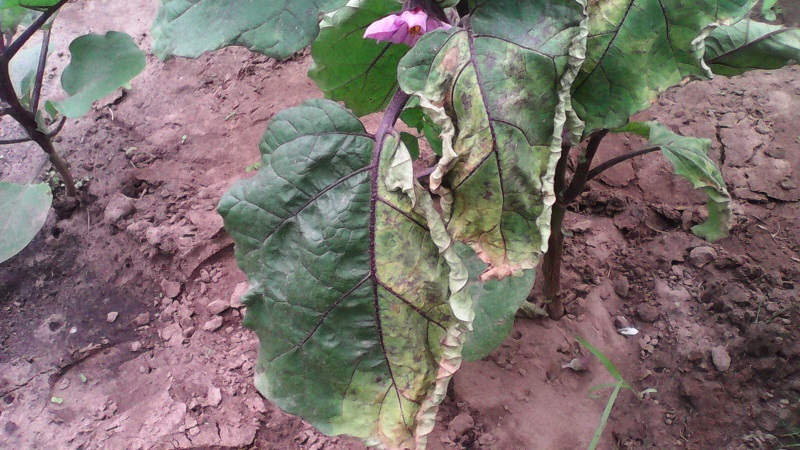
Pests that threaten eggplant:
- Aphid. Small insects that stick around the plant and feed on it. For destruction, they are treated with insecticides. But at home, you should not use chemicals. Use folk remedies: spray with wood ash infusion or soapy water.
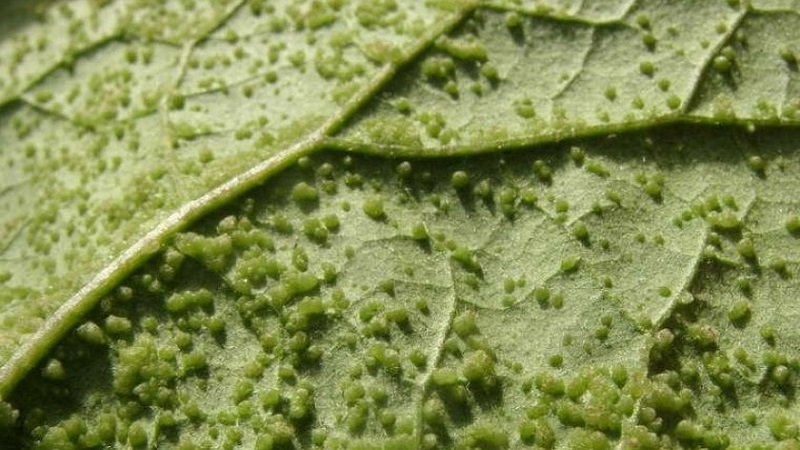
- Colorado beetle. Adult beetles are removed and placed in a saline solution. Beetle larvae are removed with a napkin if they are on the leaves. Plants are sprayed with a decoction of herbs: celandine, wormwood, garlic, horsetail, dandelion, hot pepper, elecampane. The ingredients are mixed in equal proportions, infused for 2-3 days.
- Spider mite. A microscopic insect that sticks to the plant, penetrates the stem and feeds on the eggplant juices. This causes the leaves to curl and become stained. Insects braid the habitat with a thin web, which does not allow light to pass through and damages the structure of the leaf. To get rid of the spider mite, spraying with the preparations "Envidor" and "Actellik" is carried out.
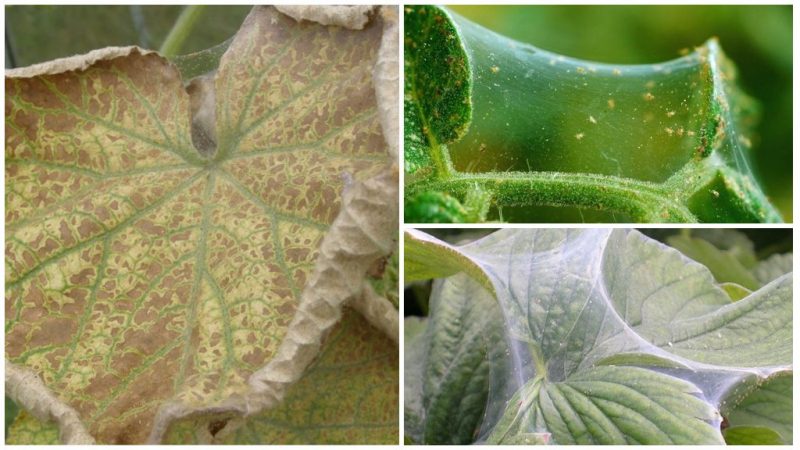
- Medvedka. A dangerous insect that lives underground. It gnaws at plant roots, destroys stems and leaves, and can damage fruits. To eliminate the insect, the soil is regularly loosened. Burrows and passages are filled with a heated solution of copper sulfate or soapy water. They introduce drugs against the bear into the soil: "Bankol", "Medvetox", "Thunder".

When is it time to replant seedlings
Eggplants are transplanted into open ground in early June, and in a greenhouse in the second half of May. Two weeks before transplanting, they are sprayed with a 0.5% solution of copper sulfate to prevent fungal diseases.
How to do it right
Before landing eggplant seedlings in open ground, make sure that the spring frosts have finally receded, and summer weather is set at least 10-15 ° C at night.
10-14 days before the transfer of seedlings to the beds, they begin to harden it: they take the plants out into the open air, gradually increasing the time to several hours. The day before planting, the plants are watered abundantly. Choose plants with a sturdy trunk for planting.
Conclusion
Growing eggplant seedlings at home is not difficult. The main thing is to follow all the recommendations for planting and care: to properly prepare the seeds, observe the temperature and light conditions, water on time, apply top dressing, track the occurrence of diseases and pest attacks.